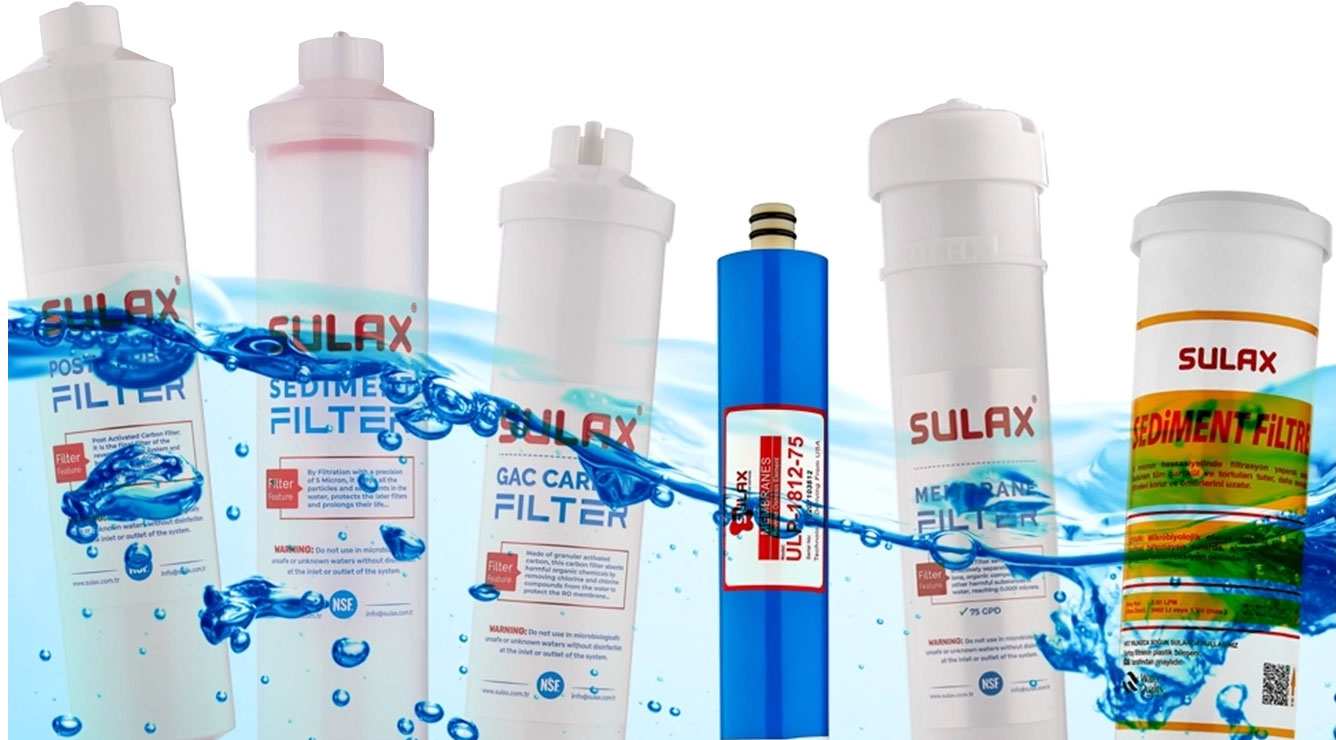
TDS value indicates the total amount of dissolved substances in water. These substances include minerals such as salt, calcium, magnesium, potassium, nitrate, and sulfate. TDS stands for “Total Dissolved Solids.” It’s important to note that one of the most critical factors in maintaining an ideal TDS level is the quality of the water purification filter you use.
The TDS value helps us understand how “pure” or “mineral-rich” the water is. It is measured in ppm (parts per million) or mg/L. For example, a water sample with a TDS of 50 ppm means it contains 50 milligrams of dissolved solids per liter.
The most accurate answer to the question “What should the TDS level be in purified water?” is this:
The ideal TDS level in water purification systems is between 50 and 150 ppm. This range indicates that the water is sufficiently purified while still containing essential minerals.
Drinking water is not only judged by its clarity but also by the substances it contains, its mineral content, and whether it’s safe for human health. One of the main indicators is TDS. pH level and water hardness are also important factors.
The ideal TDS value for drinking water is between 50–150 ppm. The ideal pH range is 6.5 to 8.5. The recommended hardness level should be between 60 and 120 mg/L. If you're wondering whether your system affects TDS levels, you can explore different water purification systems.
In purified (distilled) water, the TDS value ranges between 5–15 ppm. For drinking water, the ideal TDS level is 50–150 ppm. Municipal tap water typically has a TDS between 150–400 ppm. Natural spring water usually ranges from 100–300 ppm, while seawater can exceed 10,000 ppm.
TDS is measured using a TDS meter. This device measures the amount of dissolved solids in water and displays the value in ppm. To measure TDS, follow these steps:
If you want to reduce the TDS level of your water, consider the following tips:
Measuring the TDS value of purified water is very simple. Turn on the TDS meter, take a water sample, dip the device into it, and the screen will display the result in ppm. That’s all it takes.
TDS refers to the total amount of dissolved salts and minerals in water. In purification, the goal is to lower this value to make the water drinkable.
No. TDS measures the concentration of substances in water, while pH measures the acidity or alkalinity. They are two different parameters.
The most effective method is using an RO (reverse osmosis) system. Also, filter changes and pressure adjustments are important. If you don’t replace your filters regularly, TDS levels will inevitably rise.
The ideal TDS range for drinking water is 50–150 ppm. This range ensures the water is both clean and rich in minerals.
Zamzam water has a TDS value of approximately 800–1000 ppm. It is naturally rich in minerals.

Fill out the form and be the first to enjoy the benefits!